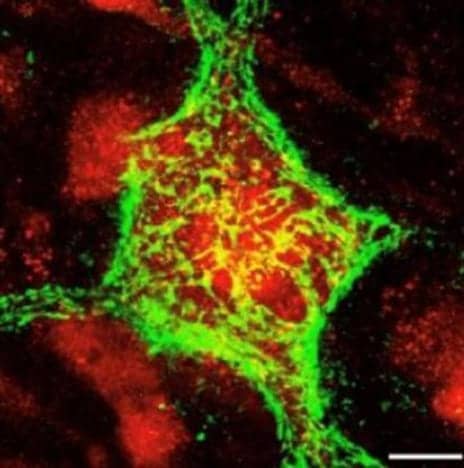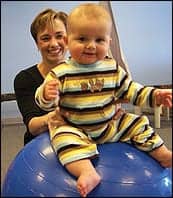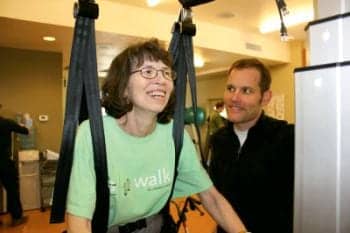
Proteoglycans in the net limit functional regeneration and plasticity after spinal cord injury. The chondroitinase enzyme removes the net and allows for regeneration and functional recovery, especially at chronic stages, according to the researchers. (Image courtesy of Case Western Reserve University School of Medicine)
A breakthrough study published in Nature Communications suggests, in animal models of chronic injury, that long-term, devastating effects of spinal cord injury (SCI) trauma on breathing and limb function may be reversible.
The new study describes a treatment regimen that helps reawaken certain special types of nerve cells that can regenerate extensions, called axons, within the damaged spinal cord. Rats with spinal cords half severed at the second cervical vertebrae (C2) regained complete diaphragm and partial forelimb function on the severed side after treatment. The recuperative effects of the therapy were fully maintained 6 months after treatment end.
“For the first time we have permanently restored both breathing and some arm function in a form of high cervical, chronic spinal cord injury-induced paralysis. The complete recovery, especially of breathing, occurs rapidly after a near lifetime of paralysis in a rodent model,” says senior author Jerry Silver, PhD, professor of neurosciences at Case Western Reserve University School of Medicine, in a media release.
The treatment leverages the body’s innate ability to very slowly sprout new axon branches from a sub-population of nerve cells that remain intact below the injury. The activity of these new branches is completely stifled by a family of potently inhibitory molecules called proteoglycans.
“The strategy was to use a simple, one-time injection of an enzyme, chondroitinase, that breaks down the inhibitory proteoglycan molecules. The enzyme was administered, not within the lesion itself, but lower down within the spinal cord where motor nerve cells reside that send axons out to the diaphragm and forearm,” Silver states.
In animals treated immediately after spinal cord injury, the enzyme only marginally helped restore nerve growth with minimal functional recovery. However, in animals treated long after injury, the therapeutic effects of the enzyme were remarkably better. In as little as 1 week after treatment in chronically injured rats, new nerve extensions began to restore diaphragm function that had been silent for many months. Seventy percent of rats treated with the enzyme chronically, also began to use their forelimbs to move about and explore their environment (compared to only 30% of control animals), the release explains.
“Surprisingly, the technique worked far better at chronic stages than at acute stages after injury,” Silver adds.
The longer the animals had been paralyzed, the greater were the restorative effects of the enzyme. Silver’s team found that even after a year and a half following spinal cord injury, the treatment could recover full activity to rat diaphragms. One week after treatment, 60% of the animals had improved diaphragm function. Two weeks later, every rat showed improvement—even though their paralysis had lasted most of their lives.
Interestingly, exposing the rats to brief periods of low oxygen levels, a respiratory therapy known as acute intermittent hypoxia, helped strengthen the growing nerve extensions, providing an added benefit. However, Silver’s team found that when the rats were treated with the enzyme combined with excessive amounts of respiratory therapy, rats developed chaotic activity in their once paralyzed diaphragms.
The researchers hypothesized that the potential for highly abnormal activity may be why the body releases inhibitory molecules to prevent functional axon regeneration in the spinal cord. They are now working to optimize the combination therapy to maximize recovery, especially in the forearm and paw, the release continues.
“Our data illustrate the relative ease with which an essential motor system can regain functionality months to years after severe spinal cord injury,” Silver concludes. “The treatment regimen in our study is relevant to multiple types of chronic incomplete spinal traumas, and we are hopeful it may also help restore motor function following spinal cord injury in humans.”
[Source(s): Case Western Reserve University, Science Daily]




